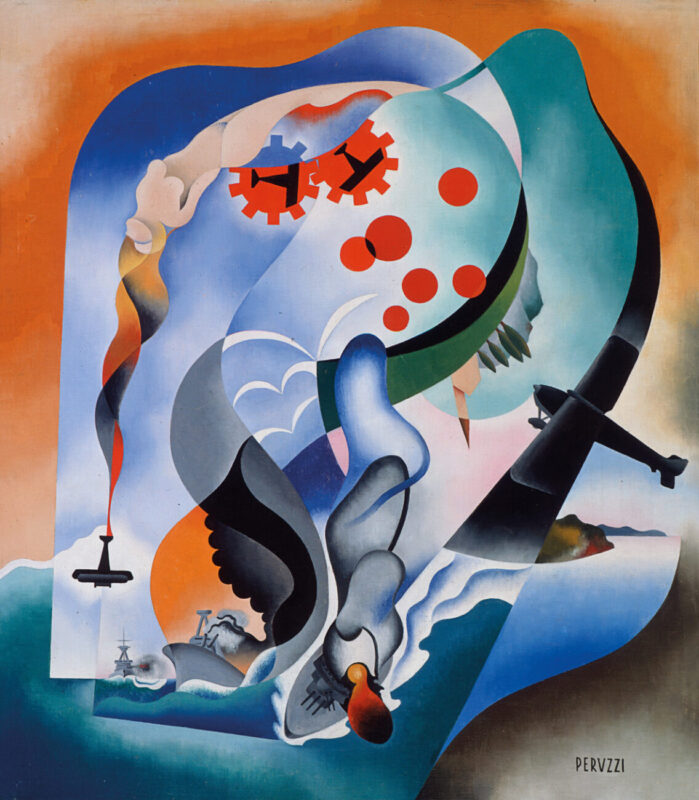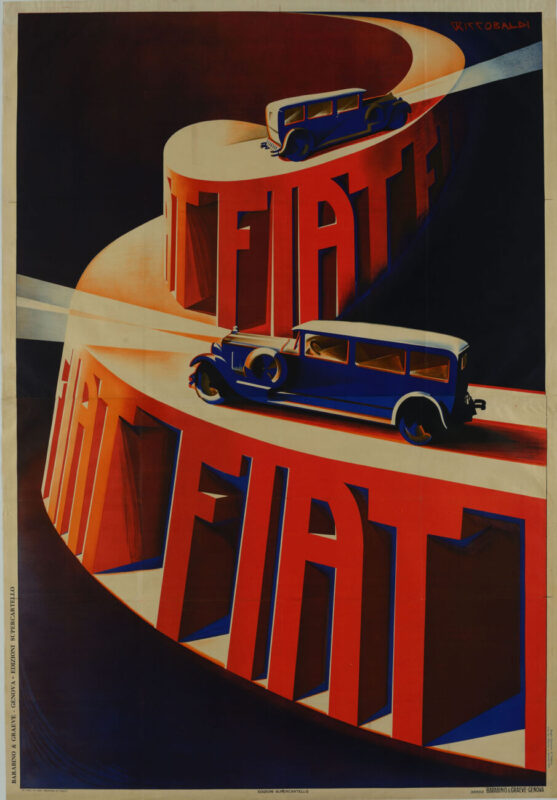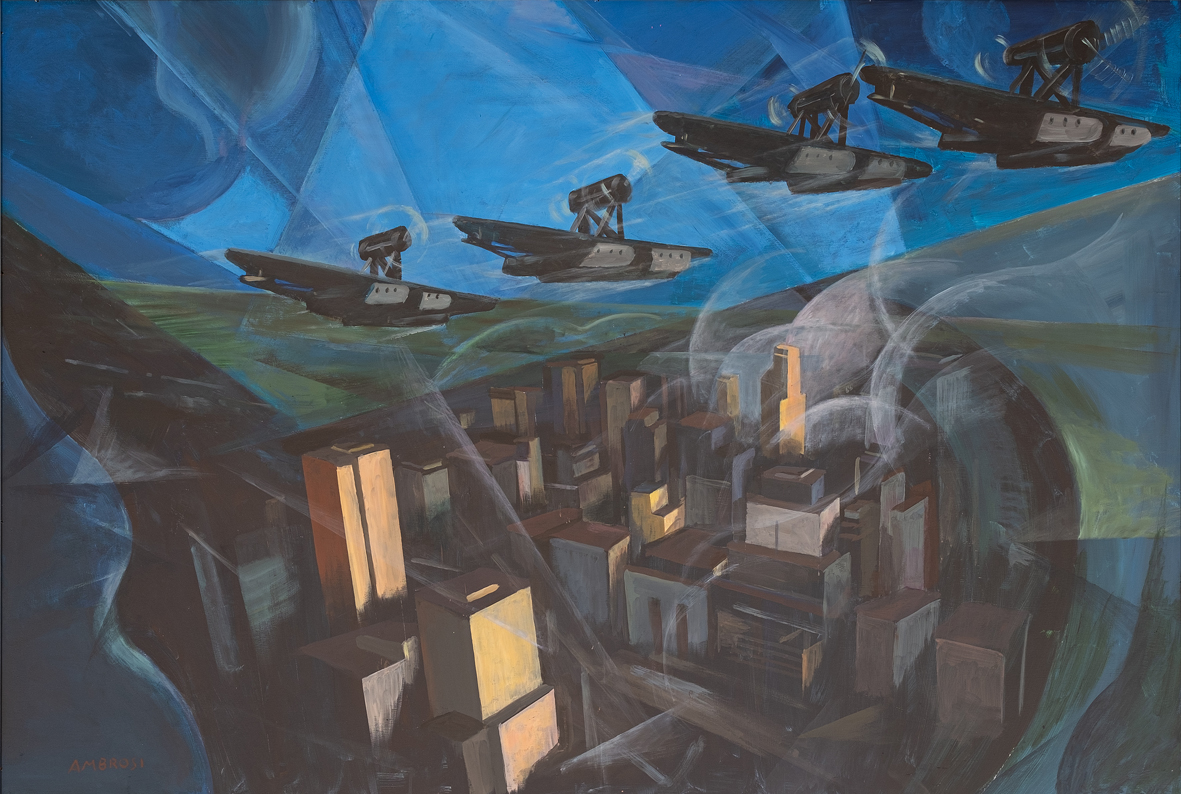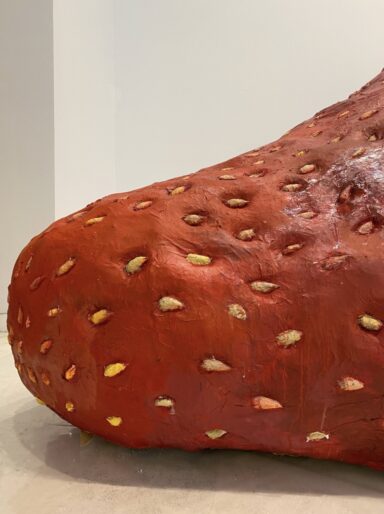Matera and Treviso join to celebrate the Futurism movement
Matera and Treviso, two Italian cities with rich cultural legacies, are joining forces to celebrate the artistic movement known as Futurism. This collaboration between the Museo Nazionale di Matera, under the direction of Annamaria Mauro, and the Direzione Regionale Musei Veneto, led by Daniele Ferrara, promises to bring an exciting and comprehensive exploration of Futurism to art enthusiasts.
The Museo Nazionale di Matera, located in Palazzo Lanfranchi, is set to host the grand exhibition “Italian Futurism: The Contribution of Southern Italy to the Movement.” The show, curated by Massimo Duranti, will run from October 20, 2023, to January 10, 2024. This Matera exhibition will feature a significant collection of Futurist posters on loan from the Museo Nazionale Collezione Salce in Treviso, among various other artworks.
The Treviso-based museum, under the purview of the Direzione Regionale Veneto, will reciprocate with a large exhibition specifically dedicated to the theme of Futurist posters. Titled “Paper Futurism,” this Treviso exhibition, curated by Elisabetta Pasqualin with the collaboration of Sabina Collodel, will unfold in two successive parts at San Gaetano del Salce. The first part, “Forms of Avant-garde,” will be on display from October 28, 2023, to February 25, 2024, followed by the second part, subtitled “Imagining the Universe through the Art of Advertising,” from March 1 to June 30, 2024.

The Matera exhibition, “Italian Futurism: The Contribution of Southern Italy to the Movement,” curated by Massimo Duranti, with contributions from Andrea Baffoni and Antonella Pesola, Annamaria Mauro, Daniele Ferrara, Chiara Matteazzi, and Alessandro Demma, aims to revisit and highlight the role that Southern Italy played in the dissemination and development of Italian Futurism, especially from the early 1920s. The exhibition seeks to reaffirm Southern Italy as a vital hub for Futurist ideas, involving both Futurist artists born and raised in the South and those who actively participated in events and exhibitions in this region. This retrospective explores the role and developments of Futurism from 1914 to 1944 in Southern Italy, focusing on the major historical exhibitions organized by Futurists in the South.
In Treviso, the “Paper Futurism” exhibition will focus on the graphic expressions of the Futurist movement. As Director Daniele Ferrara points out, while paintings and sculptures of Futurism are well-known and easily recognizable, Futurist advertising posters remain a niche area, with their own unique language despite widespread distribution. The show will feature posters by renowned Futurist artists such as Sironi, Dudovich, Fortunato Depero, Seneca, Nizzoli, Boccasile, Nicolai Diulgheroff, Xanti Schawinsky, Giulio Cisari, Lucio Venna, Umberto di Lazzaro, Luigi Martinati, and many others. These posters, authentic Futurist masterpieces, document the evolution of the movement in Italy between the two world wars.

These projects underscore a renewed interest in Futurism, following the centennial celebrations in 2009. Over the past months, numerous exhibitions dedicated to the Futurist movement have taken place in Italy and abroad, attesting to the enduring influence of Futurism and its principles on contemporary art.
Riding on the collective enthusiasm for the “rediscovery” of Futurism, the Museo Nazionale di Matera, curated by Massimo Duranti, presents “Italian Futurism: The Contribution of Southern Italy to the Movement.” The exhibition, featuring over 130 paintings, sculptures, and drawings, aims to “revisit and highlight the role that Southern Italy played in the dissemination and development of Italian Futurism, especially from the early 1920s,” explains museum director Annamaria Mauro. This perspective casts Southern Italy as a vibrant hub for Futurism, involving both Futurists native to the region and those who actively participated in events and exhibitions in the South.

The Treviso exhibition, curated by Elisabetta Pasqualin and Sabina Collodel, is titled “Paper Futurism” and is also divided into two parts at the Museo Nazionale Collezione Salce in Treviso. The first part, “Forms of Avant-garde in the Salce Collection Posters,” offers a closer look at Futurist posters from the Salce collection, the most extensive and valuable collection of historical posters in Italy and the world. The second part, scheduled from March 1 to June 30, 2024, focuses on graphic arts and is titled “Imagining the Universe through the Art of Advertising.”
As Pasqualin points out, “Futurism permeated every aspect of daily life, including publishing and advertising graphics. It was Fortunato Depero, in his 1931 manifesto ‘Futurism and Advertising Art,’ who famously declared, ‘The art of the future will be powerfully advertising.’ ‘Paper Futurism’ affirms this prophecy. The exhibition showcases the posters of Sironi, Dudovich, Depero himself, Seneca, Nizzoli, Boccasile, Nicolai Diulgheroff, Xanti Schawinsky, Giulio Cisari, Lucio Venna, Umberto di Lazzaro, Luigi Martinati, among many others—genuine Futurist masterpieces that demonstrate the transformation of the ‘vortex’ into a ‘turbine’ in Italy between the two world wars.”
These exhibitions demonstrate that Futurism continues to capture the imagination and inspire contemporary artists, reaffirming its ongoing relevance in the world of art and culture.




